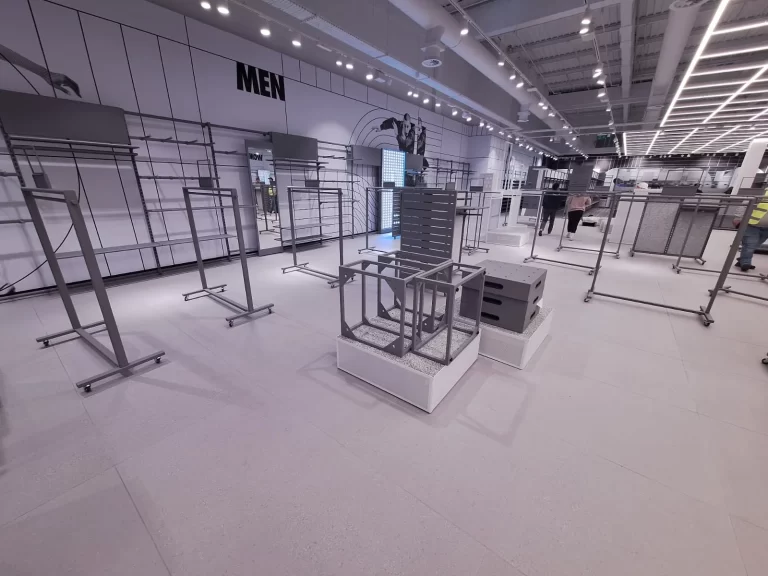Preparation For Tiling
Laser-Guided Preparation: Precision Redefined
Surface preparation is the foundation of any successful tiling project, and we take it seriously. Our laser-guided approach ensures every floor is flat, reducing the risk of cracking, shifting, or uneven tiles. This precise method not only enhances the durability of your tiling but also saves you money by minimising unnecessary material use.
Traditional leveling methods like pour and fill, often rely on manual measurements and eye judgment, which can result in inconsistencies and sub par surfaces. Our state-of-the-art laser leveling technology offers a game-changing advantage by:
- Ensuring Unmatched Accuracy: Laser tools detect even the smallest irregularities, allowing us to correct them with precision.
- Reducing Material Waste: Unlike traditional methods that often require excessive screeds or compounds, our laser-guided approach targets only the necessary areas, saving you time and money.
- Improving Efficiency: Faster and more reliable than manual methods, laser leveling speeds up the preparation process without compromising quality.
Grinding with a Tailored Approach
Inversely, our unique techniques play a crucial role in both leveling and grinding. Unlike traditional methods that rely on manual assessments, our lasers allow us to:
- Pinpoint High Points with Precision: By detecting raised areas on the floor, we can accurately identify where grinding is needed to bring the surface down to the desired level.
- Maintain Uniformity: We ensure that grinding achieves a perfectly even surface, eliminating bumps and irregularities that could compromise tile installation.
- Save Time and Materials: By targeting only the necessary areas for grinding, we minimize unnecessary labor and avoid excessive use of screeds or compounds.

Grinding with Compliance and Safety in Mind
Grinding floors can be a dusty and challenging process, but we prioritize safety and environmental compliance at every step:
- M-Class Dust Extraction Systems: To meet site regulations and maintain a clean, safe working environment, we use professional-grade M-Class dust extraction systems during grinding. These systems:
- Effectively capture harmful dust particles, ensuring compliance with industry standards.
- Protect the health of our team and others on-site by maintaining air quality.
- Reduce cleanup time, keeping the project on schedule.
- Precision Tools for Every Surface: Whether grinding down concrete, screeds, or other materials, we use specialist equipment designed to handle each unique surface with care and efficiency.
1. What Is Surface Preparation in Tiling?
Surface preparation in tiling involves preparing the floor or wall to create a smooth, clean, and level foundation for tile installation. It’s a critical step that ensures the durability and longevity of the tiles. The process typically includes:
- Cleaning: Removing dust, grease, old adhesives, and debris to ensure proper adhesion.
- Grinding and Leveling: Smoothing out raised areas or imperfections to create a level surface.
- Priming: Applying a primer to improve the bond between the surface and the tile adhesive. Proper preparation prevents issues like cracking, uneven tiles, and loose grout, ensuring a flawless finish.
Why Is Surface Leveling Important Before Tiling?
Surface leveling is crucial because uneven surfaces can lead to a range of problems:
- Durability Issues: Tiles on uneven surfaces are more likely to crack or loosen over time.
- Aesthetic Problems: Uneven tiles result in gaps, lippage (height differences between tiles), and an unprofessional appearance.
- Adhesion Challenges: Uneven surfaces reduce the adhesive’s ability to bond properly, compromising the installation. By leveling the surface, you ensure a smooth, stable, and visually pleasing result that will stand the test of time.
How Does Laser Equipment Improve Floor Leveling?
Laser-guided equipment revolutionizes the floor leveling process by providing unmatched precision. Unlike traditional methods, laser technology:
- Detects High and Low Points: Pinpoints areas that require grinding or leveling with incredible accuracy.
- Ensures Uniformity: Creates a perfectly flat surface for tile installation, reducing the risk of future problems.
- Saves Time and Materials: By targeting specific areas, it minimizes the need for excessive screeds or compounds, saving costs and speeding up the project. This advanced technology ensures your tiles are installed on a foundation that’s both flawless and cost-effective.
Can You Tile Over Uneven Surfaces?
Tiling over uneven surfaces is not recommended, as it can lead to:
- Cracked Tiles: Stress on tiles due to uneven pressure points.
- Uneven Appearance: Visible height differences between tiles, detracting from the finish.
- Compromised Adhesion: Adhesive may not bond properly on uneven areas, causing tiles to loosen over time. If a surface is slightly uneven, leveling compounds can be used to correct the problem. For more significant imperfections, grinding may be required to smooth out high points. A well-prepared surface ensures the longevity and beauty of your tiled space.
Is Dust a Problem During Floor Grinding?
No, we use M-Class dust extraction systems to comply with site safety regulations and maintain a clean environment. These systems effectively capture harmful dust particles, protecting the health of everyone on-site and reducing cleanup time. Dust control is an essential part of our commitment to safety and professionalism.
What Materials Are Used in Surface Preparation?
The materials used in surface preparation include:
- Primers: To enhance adhesive bonding and create a stable base.
- Self-Leveling Screeds: Used to correct uneven floors and create a smooth surface.
- Special Compounds: Applied to fill cracks or address specific issues like moisture control. Using high-quality materials ensures a durable foundation for tiles and a professional finish.
